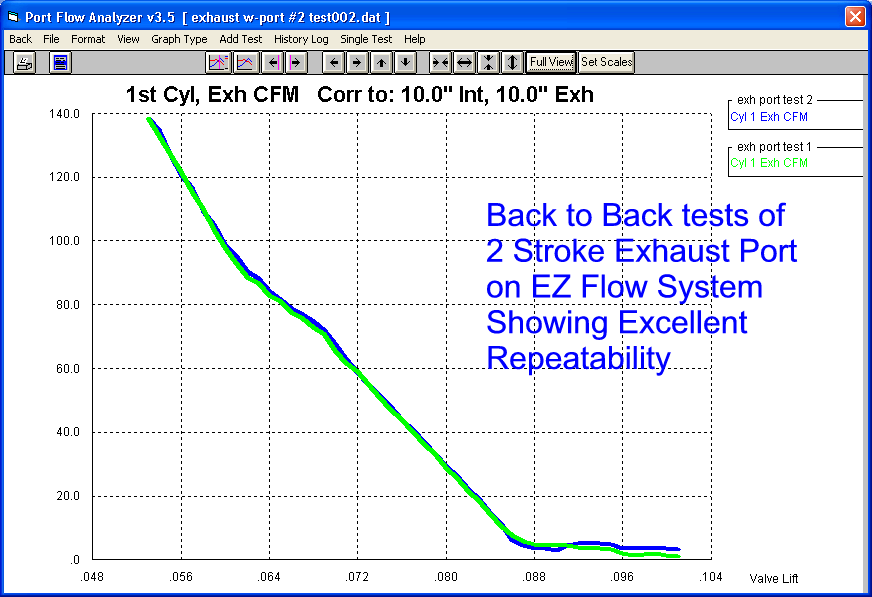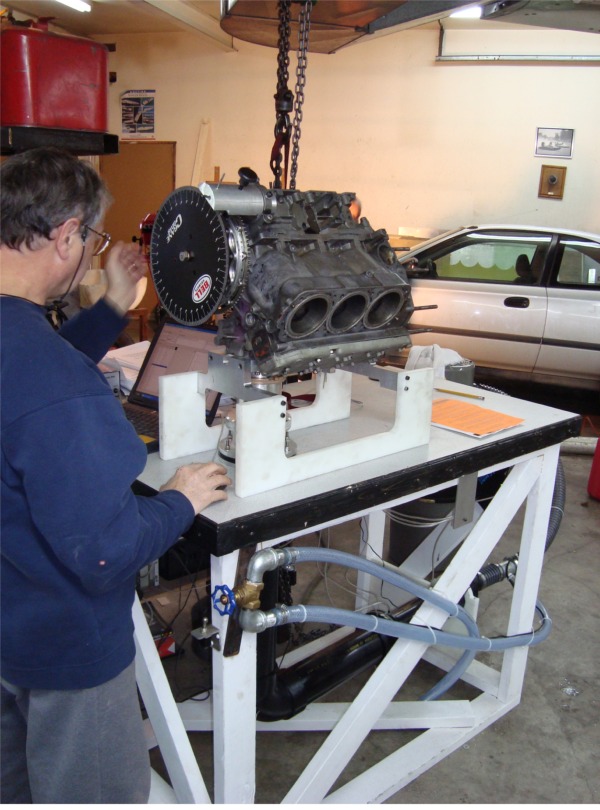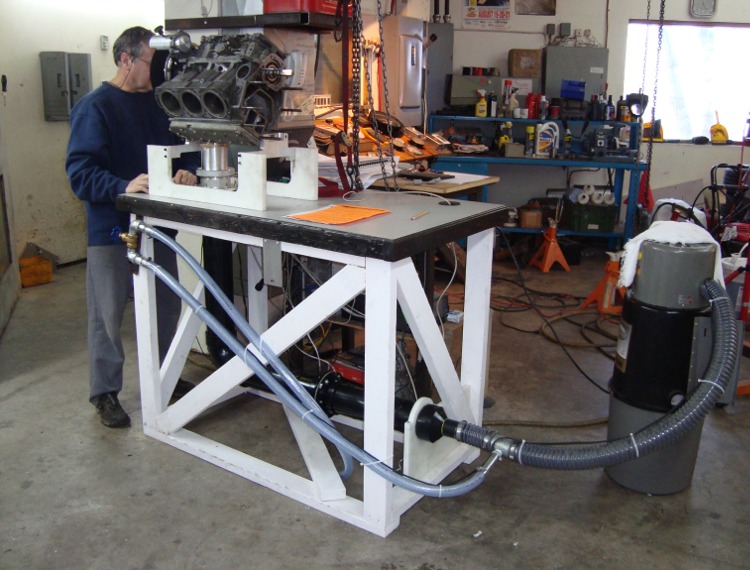User Tag List
Results 1 to 15 of 202
Thread: Air Flow / CFM's
-
01-29-2017, 11:11 AM #1
Air Flow / CFM's
Does anyone know anything about CFM's. for Mercs
Like whats the cfm rating for a 2.4 efi bridgeport horn or a 2.5 fishing,260,280 horn.
Or whats the air flow for a 4, 6 or 7 pedal reed cage
Or the air flow readings for a 4, 6 or 7 pedal intake
I never hear anything about how much cfm's the WH series carbs do flow or can flow or efi throttle plate plenums.
Back in my High performance car days, everything was about CFM's. then compression was second and then the cam, yada yada yada. I was a multiple carb/intake genius, still am.
But I never ever hear anyone bringing up CFM's on their mercs.
CFM's = Horsepower.
Porting is to boost CFM's
Opening reed cages is to boost CFM's
Higher compression is to spin your motor faster in turn to pull in more cfm's
Everything is about air flow and cfm's but there is never talk about it.
I'd be very interested in hearing how many cfm's can flow through a merc. I see Brucato and MAD have huge plenum openings especially MAD but thats only as good as your motor can inhale the cfm's. Carbs are all about air flow, in fact they require it to create vacuum in the venturi. But yet its never brought up.
I would never put an 850cfm carb on a 350 chevy because you would be stuffing it excessive fuel and they guy with the 600cfm carb would pull away from you even if the 850 is a cooler carb to have. Thats kind of a comparison to a Brucato and MAD front end. I'm not talking about the electronics of Brucato and MAD. I understand the electronics are there to control the fuel/air ratio. thats obvious. I'm not trying to compare to a top fuel power grid and throttle body injection system. Just saying that on a car with brodix, afr, whatever aluminum heads you can't build an engine without knowing what your intake and induction system flows or your just playing a dangerous guessing game at your own expense. So this is why I am curious about air flow and cfm's (cubic feet per minute) on these sweet little two strokes.
So what gets me curious is just pondering the thought of crazy things like modern technology for instance. You take your efi plenum off, weld up a tapered plate to mount a F.A.S.T. Holley, Edelbrock self learning fuel injection system. You can mount the carburetor looking throttle body sideways being you using your stock six injectors so there is no fuel in the unit anyways. Now you have a self learning system that will calibrate itself every time you change cylinder compression, octane and timing. Sounds simple. I'm sure there are hiccups to overcome. But to have an ecu that is constantly changing its variables to adapt to your driving habits seems like a lead foot and racers dream. Exhaust tuners and back pressure are a different story. Thats why I didn't bring up those subjects. Yet.
I may be a newbie around here and I haven't race boats in the past and I am still learning the simple yet highly delicate operations of multi cylinder 2 strokes. But I accell in the automotive field. I'm just trying to acclimate myself into this super cool boat engine world. Its pretty fun and interesting. Its just that its like learning a new language and I really appreciate everyones input, especially when I am wrong.If I don't ask any questions, I'll never learn anything.
-
 One Oldman thanked for this post
One Oldman thanked for this post
-
01-29-2017, 05:34 PM #2
I have thought about some of this too.....the issue is modern systems require a full time wideband O2 sensor and they cant handle the oil and water involved in the exhaust track. My buddy that tunes cars has begged me to find a way to run a sensor in my motors in order to tune them better but I don't see a way to make that happen, as well as live for very long LOL!
SchramerI have a boat or two.... that I never get to drive


-
01-29-2017, 05:49 PM #3
 5000 RPM
5000 RPM
- Join Date
- Sep 2014
- Location
- Iowa
- Posts
- 280
- Thanks (Given)
- 8
- Thanks (Received)
- 16
- Likes (Given)
- 44
- Likes (Received)
- 89
- Mentioned
- 0 Post(s)
- Tagged
- 0 Thread(s)
I think somewhere on Dave Bush's website he mentions using 02 sensors when the engine is the dyno because then it can be cleaned or replaced. They then use that 02 sensor to set the open loop curves, and keep track of EGT temps that way the EGT temps actually mean something while tuning with the engine on the water.
-
01-29-2017, 06:52 PM #4
 Scream And Fly VIP
Scream And Fly VIP
- Join Date
- May 2001
- Location
- Hickory NC
- Posts
- 5,583
- Thanks (Given)
- 18
- Thanks (Received)
- 250
- Likes (Given)
- 204
- Likes (Received)
- 464
- Mentioned
- 4 Post(s)
- Tagged
- 1 Thread(s)
He is asking about flow, o2 sensor is in the exhaust to measure remaining oxygen that is not burnt. Unburnt oxygen is leaving power on the table and the more air you flow the more you may not be burning. I did have CFM meters on my dyno and did at times use them on some of the OMC's I was building.
-
01-29-2017, 07:16 PM #5
I know Al....I just brought up the little part of the post that he commented on involving modern EFI and mounting it to these older 2 stroke motas.....the little knowledge I can bring to the table to feel like I am not a moron, that is LOL. Sorry for pulling the thread in the wrong direction
I have a boat or two.... that I never get to drive


-
01-30-2017, 04:54 PM #6
 Scream And Fly VIP
Scream And Fly VIP
- Join Date
- May 2001
- Location
- Hickory NC
- Posts
- 5,583
- Thanks (Given)
- 18
- Thanks (Received)
- 250
- Likes (Given)
- 204
- Likes (Received)
- 464
- Mentioned
- 4 Post(s)
- Tagged
- 1 Thread(s)
No big deal as I know you know the difference but some on here may not and the reason I pointed out.
-
01-30-2017, 05:55 PM #7
Alex Hledin used a flow bench
The team build an EZ Flow System for flow testing their 2 stroke engines. Two (2) stroke engines present some special issues for flow testing.
- Instead of valve lift, you use Piston Position, which is also crank degrees. PTR used crank degrees divided by 1000, so 77 degrees would appear as .077" lift in the software.
- There is no exact 0 lift position with the valve seated. Instead some particular crankshaft position must be used as zero lift, where the piston is still covering the port, but just about to start opening the port. This is harder to repeat from test to test, and makes it more difficult to check for leakage.
Still the PTR team was able to produce extremely repeatable results as shown below.


is gone
-
 Mark75H thanked for this post
Mark75H thanked for this post
-
01-31-2017, 05:06 PM #8
YOU can calculate cfm required for a known displacement at a known rpm. howevER it would be Showing 100% volume Efficiency which is rarely achiEVED Only a forced induction system can do. with proper pulse tuning over 100% efficiency can happen but in a very narrow rpm band in a 2 stroke. im talking about real tech stuff. dont mean to bore anybody . i have a automotive chart with calcs for 4 stroke max volume for disc @ known rpm ehhaust system is key for a 2 stroke ART
Last edited by Magcat 62; 01-31-2017 at 05:12 PM.
-
01-31-2017, 08:03 PM #9
Scribed.....Interesting
 and good for my learning curve!
and good for my learning curve! 

 Gary
Gary
"12" Super Lite Tunnel (11') "88" 25 Yammy twin carb "BANANA SPLIT"
"77" Hydrostream Viper "87" 140 Rude heavy modded w/15" mid, Bobs nose and lwp "DANGER ZONE"
"72" Checkmate MX-13 "80" 75 Rude w/15"mid and Nitro Lu (to be restored)
"Too much is never enough" Keith Richards " Dreams become reality via hard work and perseverance" G.A.Carbonneau
"This coming from an old man that strapped two bananas together, hung a motor on it and calls it a boat" XstreamVking
-
01-31-2017, 08:06 PM #10
A little research and i came up with some #s a 2.5 needs 500 cfm @6000 600@ 7000.
-
 WillySteve liked this post
WillySteve liked this post
-
02-01-2017, 09:16 AM #11
I love how he made a jig to be clamped in the starter hole to do the timing work.
If I don't ask any questions, I'll never learn anything.
-
02-01-2017, 11:50 AM #12
I know years ago I had a couple T2 inline Merc racing engines. The TC3B carbs flowed 238cfm each times 6 carbs. A 100 cubic inch inline 6 outboard had more CFM that my Super Stock boat that had an L88 in it with 2 660 center squirters Holleys!
2005 APR FORMULA 2 ROOKIE OF THE YEAR
-
 FMP liked this post
FMP liked this post
-
02-01-2017, 08:51 PM #13
just brainstormin if you had aflowbench set up for say 2.5 flow it in stock form have inteRCHANGABLE sleeves in sets with diffERent port dimensions c&c . pop in set a and test set B and so on then port block to best port configuration for app software could have say 10 combos from mild to wild would have to make special block with quick change sleeves and spin it dry like buying a custom grind camshaft. compression tests could be programed in with a known port profile on record. i should ask JSRE He might think i need a vacation. sleeves could be made from material other than metal?
Last edited by Magcat 62; 02-01-2017 at 08:57 PM.
-
02-01-2017, 09:16 PM #14
My engine builder very respectable guy told me he ran a engine on the dunk with the plentum off va horn vs svs found no change in horse power. But no plentum made less torque. Now that's also with playing with a fuel curve for each way. Some may find Gaines in one intake or another but I kinda believe it just maybe more from finding a better tune. Mercury had it right with the horns I guess they flow more cfm than the engine can use so anymore want help. Again this is only based off my engine guys claims
Nitrous is like a slut. u wanna hit it but you know there will be consequences.
-
02-01-2017, 09:46 PM #15
The limiting factor in a 2.5 is the exhaust
2023 TUFF 25
Similar Threads
-
Hmmmm to flow or not to flow
By tunnelingus in forum Technical DiscussionReplies: 9Last Post: 09-21-2007, 05:05 AM -
200 X-flow???
By stealthperf in forum Technical DiscussionReplies: 29Last Post: 08-28-2007, 04:44 AM -
Need x-flow help
By lokinutz in forum Technical DiscussionReplies: 17Last Post: 06-20-2005, 05:18 PM



 Thanks:
Thanks:  Likes:
Likes: 

 Reply With Quote
Reply With Quote












